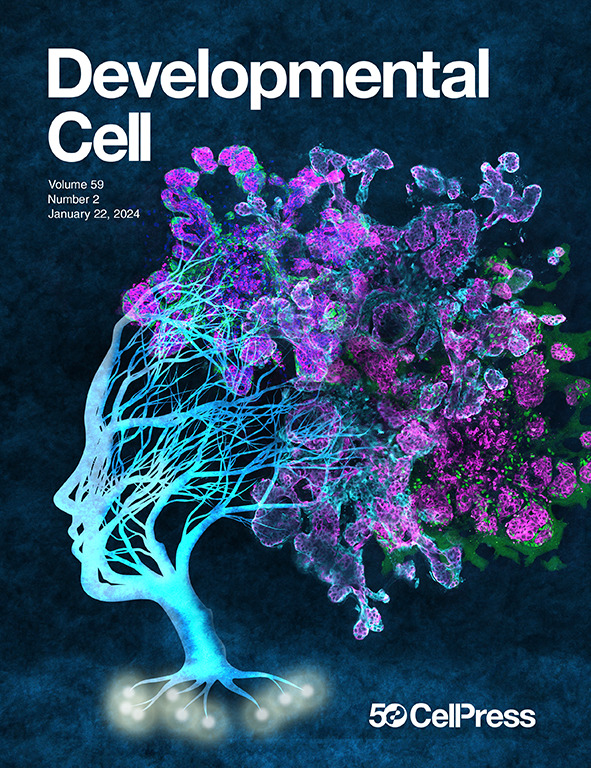拮抗系统受体整合了番茄系统损伤信号的激活和衰减
IF 10.7
1区 生物学
Q1 CELL BIOLOGY
引用次数: 0
摘要
模式识别受体(PRR)介导的损伤相关分子模式感知(DAMPs)触发了植物和动物诱导防御的第一道防线。与动物相比,植物是无根的,经常受到生物和非生物因素的物理伤害。一个长期存在的问题是植物如何在伤口防御反应和正常生长之间取得平衡,避免过度投入灾难性防御。在这里,我们报道了番茄伤口肽激素系统中的两个拮抗系统受体SYR1和SYR2以配体浓度依赖的方式调节免疫稳态。SYR1作为高亲和力受体启动系统蛋白信号传导,而SYR2作为低亲和力受体减弱系统蛋白信号传导。SYR1激活后,systemin和SYR2的表达上调,而SYR1不上调。我们的研究结果为植物如何根据prr介导的对DAMP浓度的感知对组织损伤做出适当反应提供了机制解释,并对解耦防御-生长权衡具有重要意义。本文章由计算机程序翻译,如有差异,请以英文原文为准。

Antagonistic systemin receptors integrate the activation and attenuation of systemic wound signaling in tomato
Pattern recognition receptor (PRR)-mediated perception of damage-associated molecular patterns (DAMPs) triggers the first line of inducible defenses in both plants and animals. Compared with animals, plants are sessile and regularly encounter physical damage by biotic and abiotic factors. A longstanding problem concerns how plants achieve a balance between wound defense response and normal growth, avoiding overcommitment to catastrophic defense. Here, we report that two antagonistic systemin receptors, SYR1 and SYR2, of the wound peptide hormone systemin in tomato act in a ligand-concentration-dependent manner to regulate immune homeostasis. Whereas SYR1 acts as a high-affinity receptor to initiate systemin signaling, SYR2 functions as a low-affinity receptor to attenuate systemin signaling. The expression of systemin and SYR2, but not SYR1, is upregulated upon SYR1 activation. Our findings provide a mechanistic explanation for how plants appropriately respond to tissue damage based on PRR-mediated perception of DAMP concentrations and have implications for uncoupling defense-growth trade-offs.
求助全文
通过发布文献求助,成功后即可免费获取论文全文。
去求助
来源期刊

Developmental cell
生物-发育生物学
CiteScore
18.90
自引率
1.70%
发文量
203
审稿时长
3-6 weeks
期刊介绍:
Developmental Cell, established in 2001, is a comprehensive journal that explores a wide range of topics in cell and developmental biology. Our publication encompasses work across various disciplines within biology, with a particular emphasis on investigating the intersections between cell biology, developmental biology, and other related fields. Our primary objective is to present research conducted through a cell biological perspective, addressing the essential mechanisms governing cell function, cellular interactions, and responses to the environment. Moreover, we focus on understanding the collective behavior of cells, culminating in the formation of tissues, organs, and whole organisms, while also investigating the consequences of any malfunctions in these intricate processes.
 求助内容:
求助内容: 应助结果提醒方式:
应助结果提醒方式:


